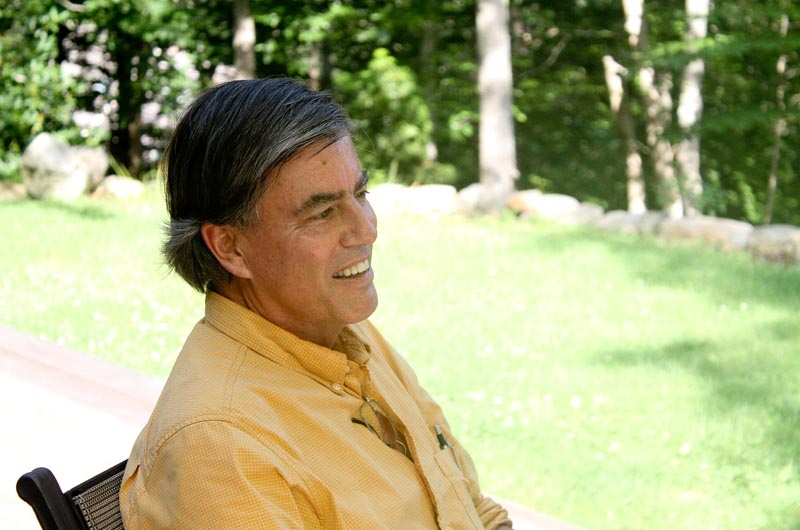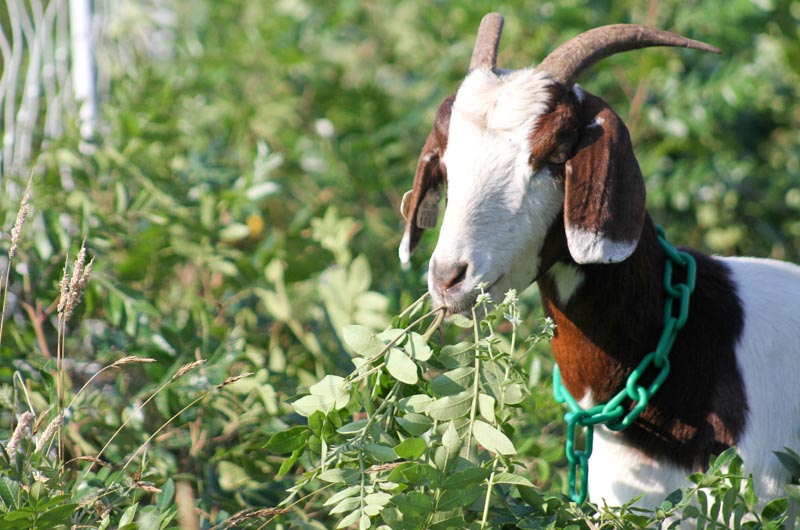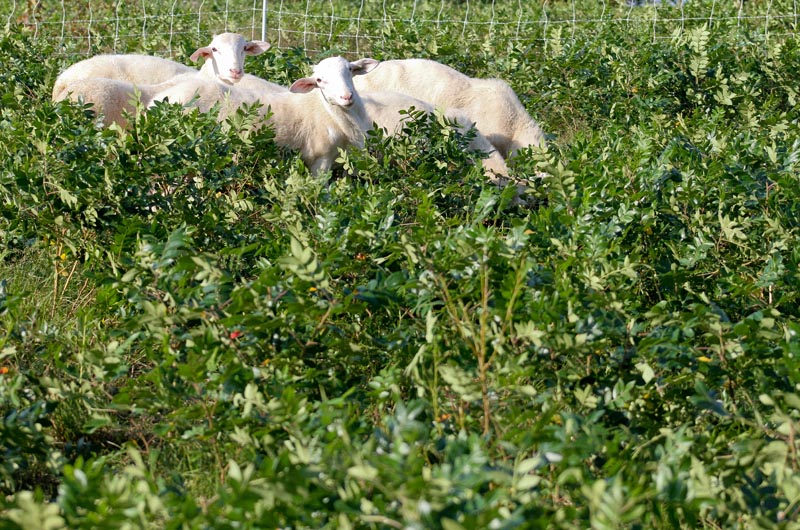Imagine sheep grazing at Wasque Point on Chappaquiddick, or goats and cattle browsing the greenery at Long Point Wildlife Refuge.
It’s not a long shot if farmers and conservation groups can manage land together, says David R. Foster, an ecologist and director of the Harvard Forest.

“This is a fabulous time for agriculture and there’s a wonderful opportunity for agriculture, land owners and conservationists to come together in a way that they haven’t previously,” Mr. Foster said in an interview at his home this week.
Mr. Foster will present History, Farms and Biodiversity — A Conservation Argument for Increased Agriculture on Martha’s Vineyard on July 24 at the Old Whaling Church at 7:30 p.m.
“There is a huge interest on the side of the conservation community in maintaining open land,” Mr. Foster said. “The most cost-effective approach likely to work is agriculture.”
American conservation efforts have the tendency to conserve areas by buying and protecting land, either by letting them go to their “natural state” or managing them in ways that simulate natural processes, Mr. Foster said.
Mowing and prescribed fire have been the routine way of management.“The reason that fire is used is because there’s an interpretation that American Indians used fire — but in between American Indians and the present you have all of this agriculture,” he said. “One of the drawbacks has been that there hasn’t been enough farming, it’s been a long time since we had enough farming [to do this]. But now there’s a resurgence.”
There is about twice as much forest land today than there was in 1850, Mr. Foster said. In an 1846 map created by Henry Whiting, Mr. Foster points out the detailed fence lines denoting each farm’s plots. The densest amount of farming was done in Chilmark and West Tisbury, but was prevalent from the Tisbury Great Pond area all the way through East Chop. West Chop was all forest at the time.
In 2009, the Martha’s Vineyard Commission Island Plan recorded 1,756 acres of farmland on the Vineyard, but with land reserved for rough pasture, hay pasture and horse farms, it was estimated that there were only 935 acres of farmland in active food production.
Now, there is a “huge opportunity” to conserve forest and retain a natural landscape.
“We need to look for a balance between maintaining all this forest land we now have on the Vineyard while figuring out a way to effectively manage all of the open land,” Mr. Foster said. “That’s going to come by this renaissance.”
Grazing land is a “really important way of generating important habitat,” Mr. Foster said. “Not only is it aesthetically attractive . . . but it generates results that are beneficial to conservation,” he said. “It’s not just land protection but it’s land management.”
And conservationists are ready to step in.
“Conservationists are willing to put up money managing land if they can join with farmers who are having trouble making it economically,” Mr. Foster said. “There’s a possibility for those two things to come together.”
Enter two pilot grazing programs with Sheriff’s Meadow Foundation and the Martha’s Vineyard Land Bank. Sheriff’s Meadow is renting three goats from the Native Earth Teaching Farm to graze on invasive species and act as natural mowers at their Cedar Tree Neck Sanctuary. The three pigmy goats arrived by boat (across Daggett Pond) last month and will graze bittersweet, poison ivy and other low -lying invasive plants through the fall.
The Farm Institute and land bank have entered into a two-year agreement to have goats and sheep graze the conservation group’s properties. This summer, eight goats and seven sheep are grazing at Waskosim’s Rock in Chilmark. The trail is lush with green moss and woodlands this time of year, with the large open field heavy in vegetation. The preserve was formerly the 17th century homestead of James Allen and stone walls still mark the boundaries of fields where cattle once grazed. The Farm Institute goats and sheep will be rotated within the field, brows
ing on sumac, poison ivy and oak and grasses, with an eye towards restoring the area to pastureland. The land bank mows the property in the winter and fall months using machinery to cut back shrubbery. But in the summer months, box turtles and birds appear, and a person must walk in front of the mowers to protect the nesting turtles. Grazing animals can work around the other animals.
Jaci Slattery, a recent graduate of Sterling College in Vermont, has been hired to oversee the flock. Ms. Slattery said the livestock is browsing “extremely well.”
“The animals really like it, they are eating something really delicious,” she said making her way across the field. “It’s much better than having them eat hay inside.”
Ms. Slattery hikes the trail every morning and evening to check the animals’ weight, health and food. The goats and sheep come freely in and out of a trailer and shade structure, sometimes preferring to graze at night.
The goats are putting on weight nicely and in their first week at Waskosim’s the sheep are doing just fine so far, Ms. Slattery said. She shrank the paddock size to make the grazing area more efficient.
“It’s nice to be utilizing land that would otherwise be left to grow over.”
This column is meant to reflect all aspects of agriculture and farm life on the Vineyard. Remy Tumin may be contacted at 508-627-4311, extension 120, or email her at rtumin@mvgazette.com.









Comments (1)
Comments
Comment policy »